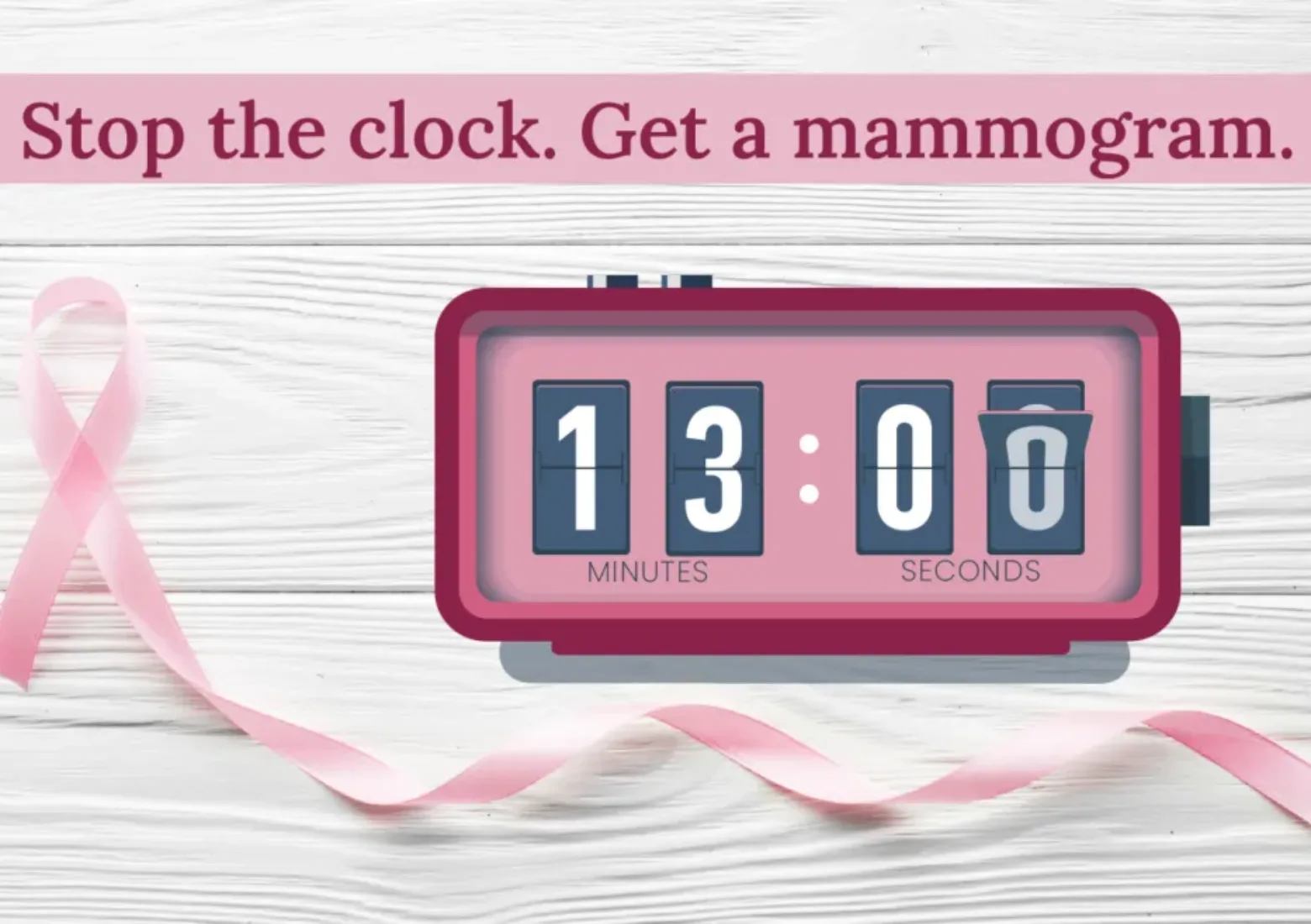Detect Breast Cancer Early with a Mammogram
September 16 • 2022

Every 13 minutes, a woman dies from breast cancer.
An estimated 287,850 new cases of invasive breast cancer are expected to be diagnosed in women in 2022 and an estimated 43,250 women are expected to die this year in the United States alone.
Can you imagine? What if your mom or your sister, your daughter or your wife was among those expected 43,250? Imagine if you were a part of that statistic. Thankfully since 2013, there has been a steady decrease in the overall breast cancer mortality rate because of the increased rates of mammography screenings and improved treatment — saving the lives of thousands thanks to early detection.
At Aylo Health, one of our top priorities is caring for women’s health by providing early prevention through annual mammograms. A mammogram is a low-dose x-ray used to detect breast cancer early, sometimes even 3 years before a patient starts showing symptoms. It’s the most effective technology to help find and diagnose breast cancer early when chances of survival are still high. Not only does early diagnosis reduce the risk of death, but it also increases options for treatment. And with our Aylo Health – Imaging at Stockbridge Pink Ribbon facility being home to two of the state’s Genius 3D mammography machines, you’ll get the best care possible with fewer false positives and more accurate findings.
You may still wonder why you should get a mammogram though. Maybe you’ve always been perfectly healthy. Some may assume they would be able to tell if they had breast cancer, but sadly, that’s not usually the case. In fact, early breast cancer is usually diagnosed through a mammogram because it often causes no signs or symptoms, which is why yearly screenings are so important. The American Cancer Society recommends that women 40 to 44 years old have the option to begin annual mammograms, 45 to 55 to undergo yearly mammograms, and 55 years or older transition to screening every two years. Even if you don’t have a family history of breast cancer, you should still have a mammogram done once you reach 40 years of age. Why? Because breast cancer doesn’t discriminate. Roughly 85% of breast cancers occur in women who have no family history of breast cancer.
Every 2 minutes, a woman is diagnosed with breast cancer in the United States.
If age isn’t the encouraging factor to get your mammogram, let the statistics be the driving force. 1 in 8 women will be diagnosed with invasive breast cancer in their lifetime, and 1 in 39 women will lose their battle with breast cancer. As of 2021, there are more than 3.8 million women with a history of or currently being treated for breast cancer.
We know there may be a lot of things standing in your way. Between taking care of your kids or a sick relative and not having additional time off work — it’s hard to find that extra time to take care of yourself. Or maybe time isn’t the issue for you. Maybe it’s one of the most common reasons — fear…fear of being one of those 287, 850…or 43,250. Whatever the reason may be, we get it. But what if you had the chance to save your life or help save the life of your loved one? What if you could be around to watch your son or daughter get married or build your dream home? What if you could spend 40 more years with your spouse or partner instead of 5?
Putting off or being afraid of your yearly Mammogram isn’t worth the potential risk that comes with it. We know the statistics can be scary but don’t let them keep you from scheduling your mammogram – in fact, let them motivate you to schedule one.
So, be a voice for your community of women and spread awareness about this deadly disease. We encourage you to celebrate Breast Cancer Awareness Month by reminding the women at risk in your life to book their mammograms and make it part of their yearly health care routine. We know it’s not easy, which is why Aylo Health patients who receive their mammogram between October 1st and 31st will get a FREE t-shirt as a “thank you” for your courage and bravery.
Every 13 minutes, a woman dies from breast cancer. So, choose early detection with an annual mammogram and together, we can stop the clock.

How To:
Performing a self-exam on a monthly basis is important when looking for changes around and within your breast.
- Step 1: Check to make sure your breasts are their usual size, shape, and color. Also, make sure they are evenly shaped without noticeable deformation or swelling. If you see any of the following changes, contact your healthcare provider immediately – dimpling or bulging of the skin, nipple abnormalities such as inverted nipples, redness, soreness, or rash.
- Step 2: Raise your arms and look for those same changes.
- Step 3: While in the mirror, look for any signs of discharge coming out of one or both of your nipples.
- Step 4: Feel your breasts while laying down, and use your hands to massage firmly, feeling for any lumps.
- Step 5: Feel your breasts again, this time standing up or sitting down. Tip: many women find it easier to feel changes in their breasts when their skin is wet, so it may be best to do this step while in the shower.

Sources:
- https://www.breastcancer.org/facts-statistics
- https://www.cancer.org/content/dam/cancer-org/research/cancer-facts-and-statistics/annual-cancer-facts-and-figures/2021/cancer-facts-and-figures-2021.pdf
- https://www.cancer.org/cancer/breast-cancer-in-men/about/key-statistics.html
- https://www.cancer.org/cancer/breast-cancer/about/how-common-is-breast-cancer.html
- https://www.breastcancer.org/symptoms/understand_bc/statistics
- https://www.reuters.com/article/health-cancer-int/breast-cancer-overtakes-lung-as-most-common-cancer-who-idUSKBN2A219B
- https://www.cancer.gov/about-cancer/causes-prevention/genetics/brca-fact-sheet
- https://www.cancer.org/cancer/breast-cancer/risk-and-prevention/can-i-lower-my-risk.html
- https://www.cancer.org/cancer/breast-cancer/risk-and-prevention/lifestyle-related-breast-cancer-risk-factors.html
- https://www.breastcancer.org/symptoms/testing/types/self_exam